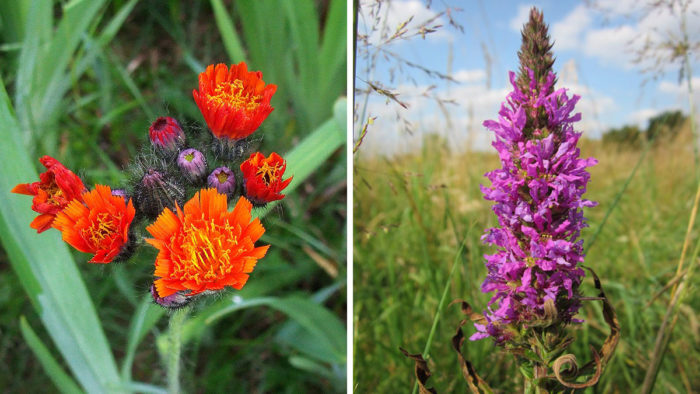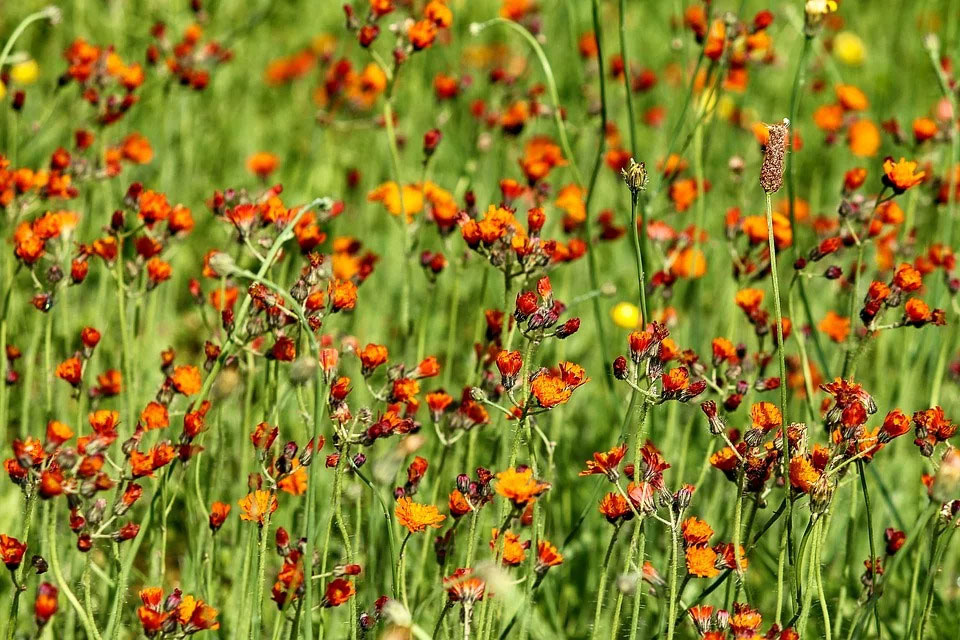
While there are many different threats to the health and well-being of our natural landscapes and gardens, invasive species are one that we need to be especially mindful of. If you cannot identify them, some may be popping up in your area or even your own garden without you realizing the threat.

One invasive plant that should on your radar is purple loosestrife (Lythrum salicaria, Zones 4–9). Every summer at McCrory Gardens we get questions about what that tall beautiful purple flower is that visitors see popping up along creeks and ditches. And who can blame them for asking, since it was introduced here as an ornamental from Europe in the 1800s and sold for years? While it does indeed have a beautiful color, this invasive perennial has been shown to replace over 50% of native species in some stands.
If you have an infestation of purple loosestrife, you should first focus your efforts on preventing the spread by pulling individual plants. Older stands may require digging and removal of the larger roots. If pulling or digging isn’t an option, remove flowering spikes before they set seed to prevent them from spreading. Their seeds can remain viable for 5 to 20 years depending on soil conditions. There are also biological and chemical control options to consider depending on infestation size, location, and timing. When action is taken early, it can significantly reduce the cost of control later and limit the loss of biodiversity.

Another invasive plant that is hitting the Northern Plains hard is orange hawkweed (Hieracium aurantiacum or Pilosella aurantiaca, Zones 4–8). This ornamental was introduced from Europe in 1875 and has a pleasant appearance with bright, orange-red, daisy-like flowers that sit atop dense rosettes of fuzzy leaves. However, don’t let its beauty trick you! Several years ago, we had the plant suddenly pop up in our perennial garden and greeted it cheerfully as many of us do when we see something new appear. Two years later we are regretting that, as we continue to pull and dig this spreading and smothering plant out of numerous locations. A single plant can spread 2 to 3 feet in a single year with its aboveground runners, in a way that is similar to that of strawberry plants (Fragaria × ananassa and cvs., Zones 4–9). You can imagine how quickly this plant can take over a space and create a monoculture that in some studies is shown to be allelopathic; this means that it can release toxic chemicals into the surrounding soil that inhibit other plants from growing.
Control is best performed by simply digging out the plants, but make sure to remove all material, as even the smallest piece of root may develop into a new plant. Larger infestations can be chemically controlled; however, a surfactant is recommended in addition, as the fuzzy hairs can prevent contact of the spray to the plant. Seeds can remain viable for up to seven years, so keep an eye out for recurrence!
Before you know it, another growing season will be here, and it is up to us to monitor for these invasive plants. If you see something new pop up in your garden or area, get in touch with your local extension office and have it identified. Who knows what else is lurking out there?
—Chris Schlenker is the head gardener of McCrory Gardens at South Dakota State University in Brookings.


















Comments
Log in or create an account to post a comment.
Sign up Log in